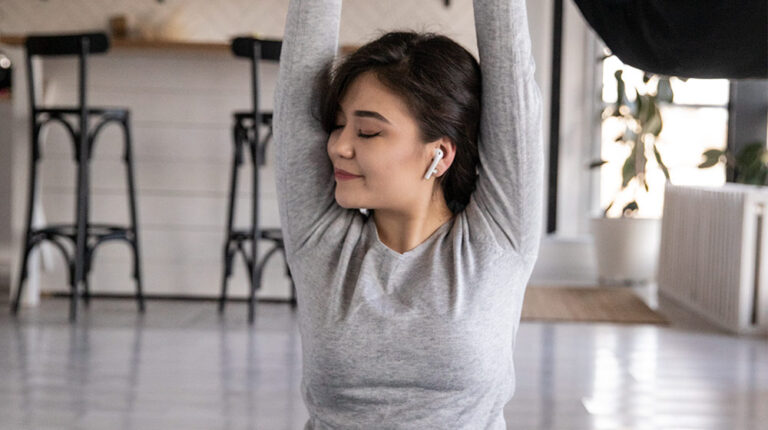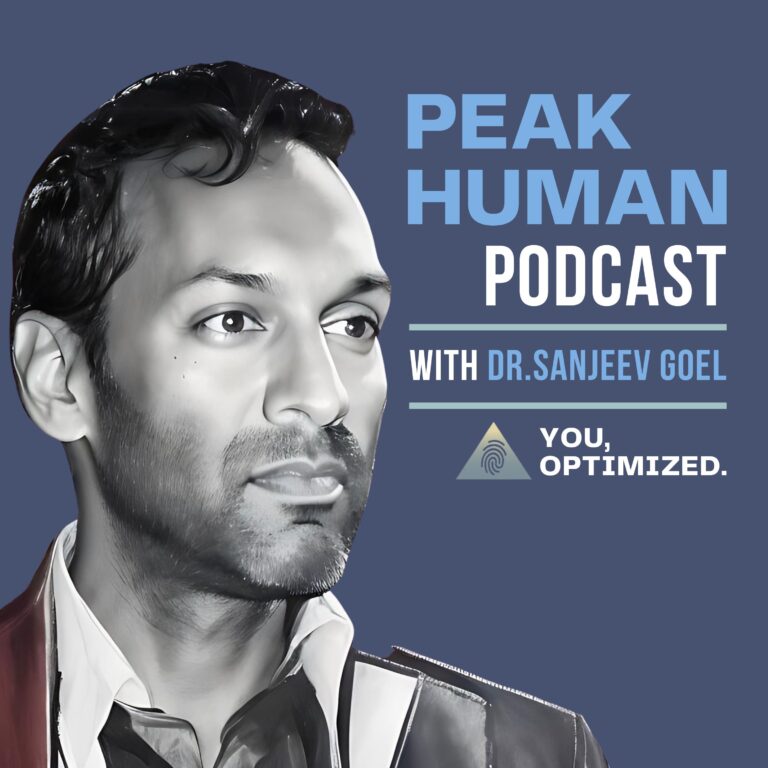Overview
Lung diseases are a severe health concern affecting millions worldwide, causing significant morbidity and mortality. Patients, especially those over 40, are particularly vulnerable to respiratory problems, and the prevalence of lung diseases is increasing due to the aging population, pollution, and lifestyle factors.
These conditions include chronic obstructive pulmonary disease (COPD). The detrimental impact of this disease is often devastating, limiting the patient’s ability to perform everyday tasks, reducing their quality of life, and leading to premature death.
Fortunately, emerging exercise techniques, such as high-intensity interval training (HIIT), offer hope to those who suffer from lung diseases. Studies have shown that it can improve lung function, reduce inflammation, and improve overall fitness.
This article reviews the research published in the Journal of Respiratory Medicine to explain how patients can overcome obstacles in exercising and improve their physicality, leading to a better quality of life by implementing HIIT.
High-intensity Interval Training Improves COPD Outcomes in Patients Aged 40 and Older
What is High-intensity Interval Training (HIIT)?
Definition
High-intensity interval training (HIIT) is a form of exercise that has recently gained popularity as an alternative to traditional steady-state cardio.
HIIT involves alternating periods of intense exercise with recovery periods of low-intensity activity or rest. The typical HIIT session lasts between 20 and 30 minutes. However, the exact time can vary depending on the individual’s fitness level and goals.
Mechanisms
The primary mechanism of action behind HIIT is related to its metabolic and cardiovascular benefits. During intense exercise, the body is forced to work at a high intensity, which can increase the production of ATP, the body’s primary energy source.
This phenomenon, in turn, can increase the body’s metabolic rate, which can help burn body fat and improve cardiovascular health. Also, HIIT can increase muscle mass and insulin sensitivity, reducing the risk of diabetes and other metabolic diseases.
HIIT also increases excess post-exercise oxygen consumption (EPOC). EPOC is the oxygen debt the body must repay after exercise to return to its pre-exercise state. Therefore, the body keeps burning more calories even at rest for several hours.
Benefits
- Maximize workout efficiency
- Improve overall fitness levels
- Burn more calories after a workout
- Assist muscle growth and fat loss
- Improve strength, endurance, and agility
- Enhance cardiovascular and metabolic health
- Challenge the body to work at maximum capacity
What is Chronic Obstructive Pulmonary Disease (COPD)?
Definition
![]()
Chronic Obstructive Pulmonary Disease (COPD) is a progressive lung disease that affects the airways, making breathing difficult.
The condition is characterized by obstructed airflow, which causes shortness of breath, coughing, and wheezing. COPD is typically caused by smoking or exposure to other harmful pollutants over a prolonged period.
Symptoms
- Chronic cough
- Shortness of breath
- Fatigue and wheezing
- Chest tightness
- Frequent respiratory infections
- Unintended weight loss
Causes
- Cigarette smoking (the leading cause)
- Exposure to air pollution, chemical fumes, or dust
- Genetics (a rare condition called alpha-1 antitrypsin deficiency can cause COPD)
Treatment
While there is no cure for COPD, several treatments are available to help manage the symptoms and slow down the progression of the disease.
- Medications (bronchodilators) can reduce inflammation and open up the airways
- Pulmonary rehabilitation programs can improve lung function and exercise tolerance
- Oxygen therapy can improve oxygen levels in the blood
- Surgery (lung volume reduction surgery or lung transplantation)
How Are HIIT and COPD Related?
Increased Oxygen Uptake and Delivery
The lungs are responsible for bringing oxygen into the body and removing carbon dioxide, making them an essential component of the respiratory system.
During exercise, the body requires more oxygen to produce energy, so the lungs must work harder to supply this oxygen. Regular workout makes the lungs more efficient at delivering oxygen across the body, allowing for adaptation to a higher intensity when necessary.
This phenomenon is particularly true for HIIT, a form of exercise alternating between short, intense bursts of activity and periods of rest or low-intensity exercise. Thus, HIIT increases lung capacity and function, making it an effective form of exercise for those with COPD.
Cardiovascular and Respiratory Health
Also, HIIT can improve cardiovascular health, which can benefit those with COPD. This phenomenon is because the cardiovascular and respiratory systems are closely linked.
For example, during a HIIT workout, the heart works harder and pumps more blood to the lungs, increasing lung capacity over time. As a result, the lungs can take in more oxygen and deliver it to the tissues, improving overall lung function.
Enhanced Angiogenesis in the Lungs
HIIT can also increase the number of tiny blood vessels, or capillaries, in the lungs. These capillaries help exchange oxygen between the lungs and the bloodstream. By increasing the number of capillaries in the lungs, HIIT can improve the efficiency of this exchange process, leading to better oxygen uptake and delivery.
Benefits of HIIT for Individuals With COPD
Improve the Pulmonary Function
Pulmonary function refers to the ability of the lungs to take in oxygen and expire carbon dioxide. In individuals with COPD, this function is often impaired, leading to difficulty breathing, fatigue, and reduced quality of life.
However, research has shown that HIIT can improve pulmonary function and mitigate the adverse effects of COPD.
HIIT increases lung capacity, improves oxygen uptake, and reduces breathlessness. The short bursts of high-intensity exercise in HIIT allow the body to adapt to increased workloads, improving cardiovascular fitness. Also, HIIT strengthens the lung muscles, allowing individuals to breathe more efficiently and with less effort.
By improving pulmonary function, HIIT helps individuals with COPD perform daily activities more efficiently and avoid exacerbations. Moreover, HIIT can be tailored to the individual’s fitness level and disease severity, making it a safe exercise technique for COPD.
Overcome Exercise Intolerance
COPD patients often experience exercise intolerance. The inability to breathe efficiently leads to breathlessness, which can cause fatigue and discourage physical activity.
Also, the energy required to breathe for individuals with COPD is more than for healthy individuals, leading to reduced exercise capacity. This intolerance is a significant concern and can contribute to decreased physical fitness and reduced quality of life.
HIIT can help individuals with COPD overcome this intolerance to exercise. Allowing shorter exercise durations than traditional continuous exercise can reduce the energy required to breathe and lower the risk of breathlessness and fatigue.
Furthermore, because HIIT can be personalized to the individual’s fitness level and disease severity, it allows for a gradual increase in intensity over time. This approach can help individuals with COPD build exercise tolerance and overall fitness.
Criteria for Evaluating the Benefits of HIIT for COPD
6-minute Walking Distance
The 6-minute walking distance evaluates the exercise capacity of individuals with COPD. It measures the maximum distance an individual can walk in 6 minutes. It is used to assess the severity of the disease and monitor changes in exercise capacity. Individuals with COPD typically have a reduced 6-minute walking distance.
HIIT can enhance exercise capacity and allow individuals with COPD to walk greater distances in 6 minutes by up to 39%. Also, HIIT can improve overall physical fitness, leading to improved endurance during walking. As a result, HIIT can enhance the quality of life for COPD patients, allowing them to perform daily activities more efficiently.
Peak Work Rate
![]()
Peak work rate measures the highest workload an individual can achieve during a maximum exercise test. It reflects the individual’s ability to tolerate and sustain high-intensity exercise and is a crucial predictor of mortality in individuals with COPD.
HIIT can enhance exercise capacity and allow individuals with COPD to achieve higher workloads by up to 34%. Furthermore, this approach can help individuals with COPD build exercise tolerance and fitness, improving overall health outcomes.
Peak Minute Ventilation
Peak minute ventilation measures the maximum amount of air an individual can breathe in and out during a minute of exercise. Individuals with COPD typically have reduced peak minute ventilation, with some studies reporting a reduction of up to 51% or more.
HIIT can enhance respiratory function and allow individuals with COPD to achieve higher peak minute ventilation during exercise. Research has shown that HIIT can dramatically improve peak minute ventilation, with the Respiratory Medicine study reporting an increase of up to 26% in individuals with COPD.
Peak Oxygen Consumption
Peak oxygen consumption reflects the highest amount of oxygen an individual can consume during exercise, a crucial indicator of cardiorespiratory fitness. COPD patients typically have reduced peak oxygen consumption due to impaired lung function.
HIIT can improve cardiorespiratory fitness and allow individuals with COPD to achieve higher peak oxygen consumption during exercise by up to 30%. This increase can improve overall physical function, allowing individuals with COPD to perform daily activities. Also, it reduces the risk of hospitalization and mortality, making it a promising therapy for COPD.
Conclusions and Future Research Directions
Despite the limitations of the research by the Journal of Respiratory Medicine—which include a lack of data about the side effects, methods of HIIT, training time, intensity, and frequency—the findings suggest that HIIT may be an effective way to improve lung function, exercise capacity, and quality of life in people with COPD.
Compared to other forms of exercise, HIIT is a safe and efficient way to improve the health of individuals with COPD. HIIT could help patients regain their physicality and exercise endurance in a rehabilitation program. However, more research is necessary to determine the optimal training parameters and the potential risks and side effects of HIIT.
Overall, the potential benefits of HIIT in COPD are remarkable, and healthcare professionals should consider this approach as a viable treatment option for COPD. As further research is conducted and the application techniques of HIIT are specified, more individuals with COPD will be able to benefit from this innovative form of exercise therapy.
References
Wang H. et al. (2023). High-intensity Interval Training Improves the Outcomes of Patients With Chronic Obstructive Pulmonary Disease: A Meta-analysis of Randomized Controlled Trials – The Journal of Respiratory Medicine.
If you have questions about the benefits of high-intensity interval training or any health problems discussed here, connect with us and learn more.
At Peak Human, our team of healthcare professionals helps you reach your ‘peak’ health with a custom whole-person approach. Using the most cutting-edge, science-backed biohacking and aesthetic tools available today, we help you achieve the highest physical/cognitive performance state, improving your overall quality of life.
Don’t hesitate to contact us for questions or to book an appointment. Get personalized support and insight from expert physicians.
UP NEXT:
- 5 Benefits of High-intensity Interval Training
- How Does Exercise Help Reduce Alcohol Consumption?
- Does Alcohol Kill Gains? The Relationship Between Alcohol and Fitness






